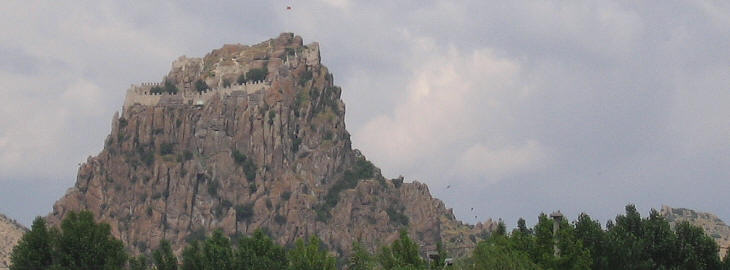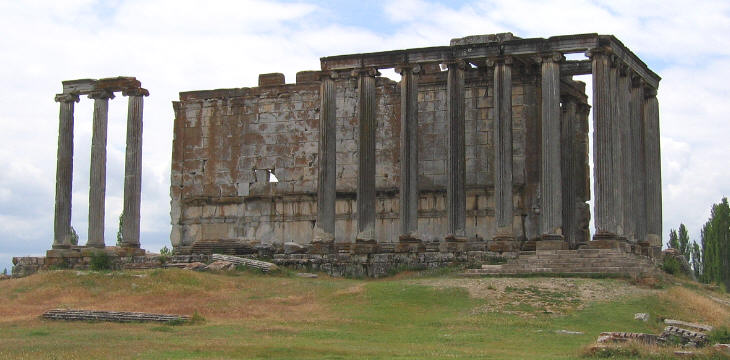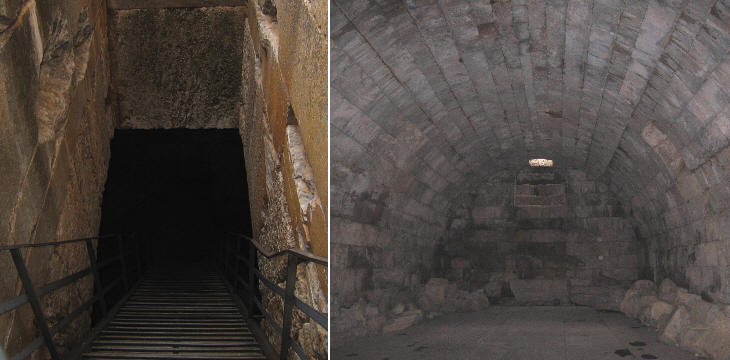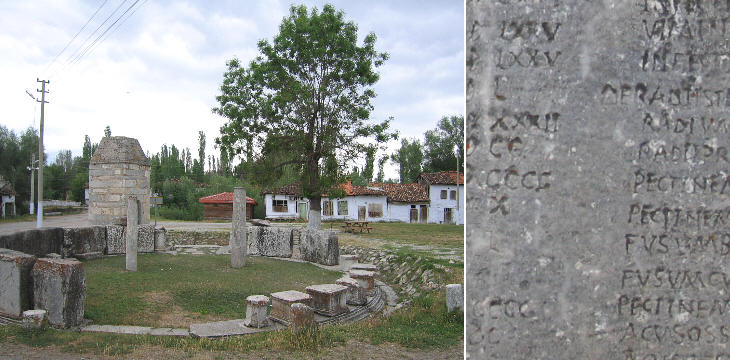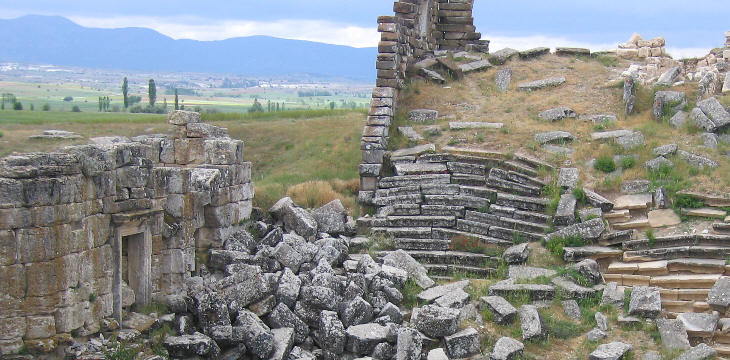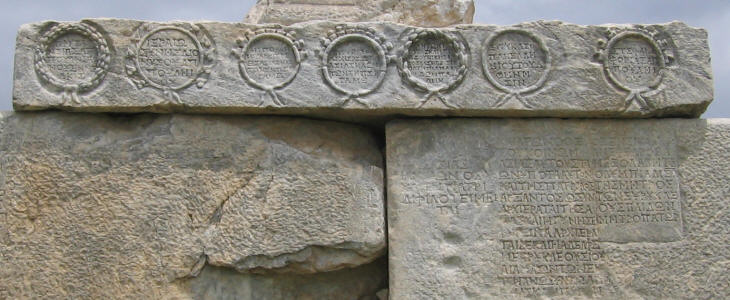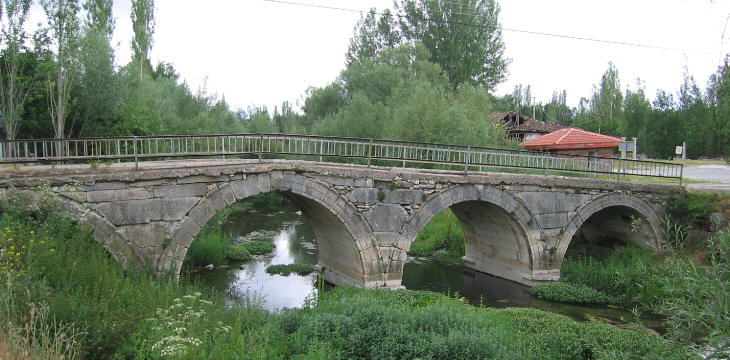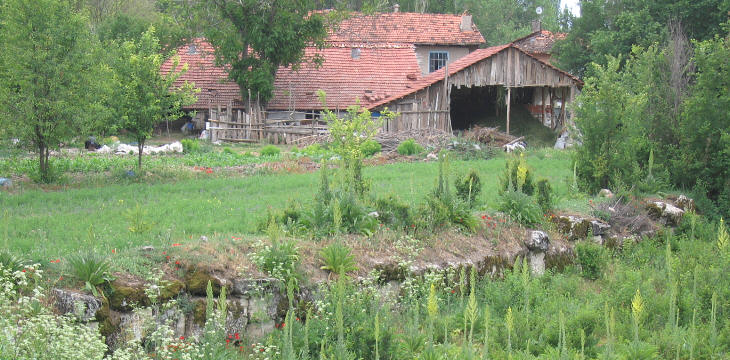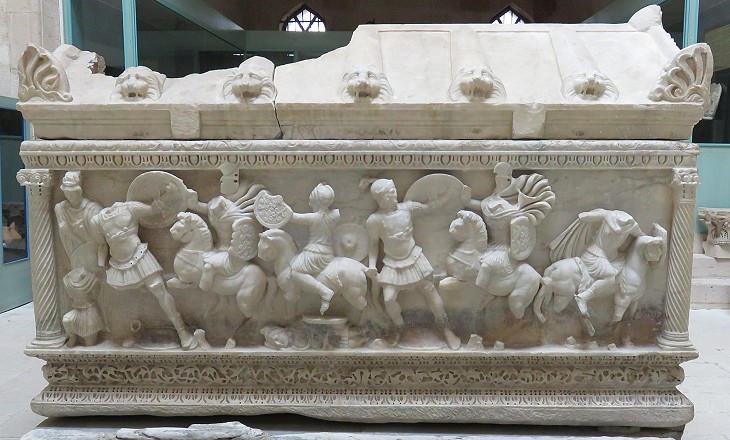  What's New! Detailed Sitemap All images © by Roberto Piperno, owner of the domain. Write to romapip@quipo.it. Text edited by Rosamie Moore. Page revised in May 2015. |
 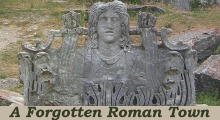 - Aizani - Aizani(relief portraying a woman (Cybele?) which was placed at the top of the Temple of Zeus) A traveller moving from Europe into Asia either crossing the Bosporus or the Dardanelles or sailing through the Aegean Sea and landing on its Turkish shore, hardly feels he is on a different continent. He sees the same mild landscape and precise farming: small coastal plains and low hills covered by silvery olive trees and other Mediterranean cultivations and, here and there, a group of cypresses marking a small cemetery. But Asia is not so far away: by going up one of the valleys one soon reaches a vast tableland which spreads eastwards as far as Persia and Afghanistan.
The average height of the tableland in western Anatolia is around 1,000 meters (3,300 ft): the towns are few and far apart: for seven hundred years (700-1400) the inhabitants of this region had to deal with the raids of Arab, Seljuk, Mongol, Tartar and Ottoman invaders before the latter consolidated their power in the region. Impregnable fortresses on the rare rocks of the tableland were the only escape from danger. This historical background can explain how the memory of a small town which flourished during the reign of Hadrian was lost, although its monuments were not covered with earth.
We went W. S.W. for an hour, which brought us to Tjavdere Hissar, a village built entirely of the splendid ruins of the ancient Azani. The beautiful temple had been visible at six miles' distance. George Keppel - Narrative of a Journey across the Balcan in the Years 1829-1830 In the XIXth century western travellers reported that in a small village (Cavdarhisar - the Tartars' Castle), located 40 miles west of Kutahya, they had seen evidence of large Roman ruins. Archaeological sites in Turkey often display impressive ancient buildings which are the result of a modern reconstruction: the Temple to Zeus shown in the image above (with the exception of three isolated columns which have been lifted up after a recent earthquake) was not affected by this rebuilding activity and is regarded as one of the best preserved (original) Roman temples in Turkey. In the cell of the temple an inscription in both Latin and Greek celebrates Emperor Hadrian and at the same time provides most of what we know about this town including its name: Aizani or Aizanoi. The temple was built on a small platform at the centre of a larger one and most likely it marked the city centre.
The double dedication of the temple to Zeus and Cybele is not evident at first sight because the cell where Cybele was worshipped lies underneath that of Zeus. It is as large as that above and while the upper part of the temple follows Greek patterns, the cell of Cybele is based on the Roman use of vaults. It received light from small openings and it was accessed through steps on the rear side of the temple; the stone steps were completed by a timber structure. The temple is a sort of metaphor of the opposites and to their being complementary to each other: male/female; light/darkness; night/day (the ceremonies related to Cybele were performed at night); east (Cybele)/west (Zeus). The first civilizations in the Anatolian peninsula and in some of the northern Aegean islands (such as Lemno) saw the prevalence of matriarchal societies and the worship of goddesses: later on the process of Hellenization superimposed on this cultural background the rather patriarchal Greek pantheon, but did not eradicate the favour enjoyed by goddesses among the locals: most of the sanctuaries of western Anatolia were dedicated to goddesses: Arthemis at Ephesus and Sardis, Aphrodite at Aphrodisia. Mythological accounts let us understand that the process of Hellenization was not entirely peaceful: Marsyas, a satyr who was flayed alive by Apollo, was a follower of Cybele.
The Temple to Zeus is the only building of Aizani inside an archaeological area, the other ones are in the fields or among a few houses. The small circular market square shown above has several inscriptions detailing to a great extent the regulations contained in a decree issued by Emperor Diocletian to stop inflation. It established the price at which goods and commodities should be sold to the public. Aizani was located not very far from Nicomedia, where Diocletian had set his residence and this may explain why the local authorities chose to show their diligence by engraving on stone the long list of items and their prices (in Roman numbers). Diocletian's decree did not reach its goal and a few years later Constantine shelved it by introducing a new monetary system.
The wealth of Aizani appears to have been based on massive production of wheat and on sheep rearing. Because Aizani grain and wool could only be shipped by land we can assume that transportation costs to reach the big cities made these goods rather expensive. So the booming economy of the town in the IInd century is a sign of a prosperous economy and heavy demand in the whole region. The authorities of the town decided to provide Aizani with facilities appropriate to the importance it had reached. Near the Temple to Zeus there is evidence of a bouleterion or odeon, a sort of small theatre, occasionally used for general assemblies. A large theatre was built one mile to the east of the temple: the ruins show the impact of the many earthquakes which hit the area, but still parts of the steps and of the scene stand upright. The construction was a huge one which surely satisfied the ego of the inhabitants, who must have been a sort of nouveaux riches and did not care too much about the decoration of their theatre.
The front of the theatre served as one of the shorter sides of an adjoining stadium: evidence that the two buildings were the result of a joint effort. While little is left of the stadium long sides, archaeologists have found parts of its entrance: the names of the winners of the games were engraved on stone inside various kinds of wreaths.
Over this stream are two ancient bridges, raised on elliptical arches, and once surmounted by balustrades, as is evident from the remains of metal which formerly retained them in their places: a superb quay connects these bridges together. G. Keppel Aizani was located near a small stream which was crossed by four bridges, two of which are still in use. Because the area is absolutely flat and the expansion of Aizani could have been easily limited to one bank of the river, the fact that several bridges were built seems an additional indication of a period of exceptional wealth: clearly having their town on both sides of a river gave the inhabitants of Aizani the impression of living in Rome.
A continuous embankment between the two main stone bridges ensured protection from flood: it was definitely a facility not many towns of the ancient world could pay for. The wealth of Aizani relied on a developed economy and although earthquakes and raids by the Goths are cited as elements behind its decline, the root causes lie in the changes which occurred in the economy of the region and of the whole Roman Empire. During the reign of Marcus Aurelius and afterwards the population was significantly reduced by recurring pestilences and this must have affected the demand for Aizani commodities. The price-control decisions taken by Diocletian had the undesired effect of negatively impacting on trade. After the raids by the Goths in the second half of the third century most towns (and even Rome) built walls to protect themselves. There is no evidence of such walls or other fortifications in Aizani so it is likely it had lost most of its importance by the end of that century.
The image used as a background for this page shows the front of a small funerary monument. Clickable Map of Turkey showing all the locations covered in this website (opens in another window)  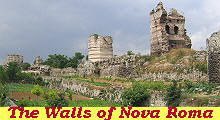  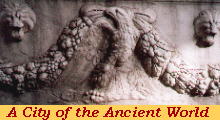
|
